December 8, 2019, at Indiana Dunes State Park Nature Center
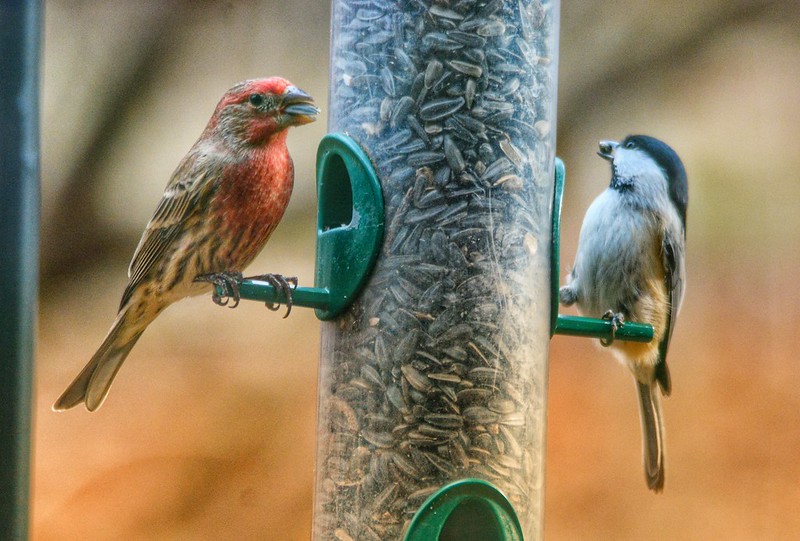


While at the Indiana Dunes State Park Nature Center watching birds and gray and red squirrels (no chipmunks this time), I noticed a melanistic gray squirrel coming in. In all my years in Hyde Park (40!!! Eek!), I’ve seen only one, in Jackson Park between 56th and 57th Streets. On a visit to my late aunt in NW Washington, D.C., I’d seen several in the neighborhood. According to Wikipedia, there’s a reason for that:
Eighteen Canadian black squirrels were released at the National Zoo in Washington, D.C., near the beginning of the 20th century during President Theodore Roosevelt’s administration. Since their introduction, the population of black squirrels in and near Washington has slowly but steadily increased, and black squirrels now account for up to half of the squirrel population in certain locations, such as the grounds of the Washington National Cathedral.
Wikipedia mentions them in the Quad Cities area of Illinois:
Black squirrels are well established in the Quad Cities area along the Iowa-Illinois boundary. According to one story, recounted in the book The Palmers, they were first introduced on the Rock Island Arsenal Island. Some of them then escaped by jumping across ice floes on the Mississippi River when it was frozen, and thus populated other areas in Rock Island.
I hadn’t seen one at Indiana Dunes or Indiana before. This one looked lighter and more grizzled than other melanistic gray squirrels I’ve seen pictured, so it may have had one copy of a mutant gene vs. two.
Gray squirrels have two copies of a normal pigment gene and black squirrels have either one or two copies of a mutant pigment gene. If a black squirrel has two copies of the mutant gene it will be jet black. If it has one copy of a mutant gene and one normal gene it will be brown-black. In areas with high concentrations of black squirrels, litters of mixed-color individuals are common.
To me, this is the most interesting part of the Wikipedia entry:
The black subgroup seems to have been predominant throughout North America prior to the arrival of Europeans in the 16th century, when America’s old growth forests were still abundant and thick. The black squirrel’s dark color helped with better concealment from its natural predators (owls and hawks) in these very dense and shaded old growth forests. As time passed, extensive deforestation and the hunting of squirrels for their meat and pelts led to biological advantages for gray colored individuals; their light-gray color became advantageous in their newly changed habitat. Today, the black subgroup is particularly abundant in the northern part of the eastern gray squirrel’s range. This is due to two main factors. Firstly, black squirrels have a considerably higher cold tolerance than that of gray squirrels. Secondly, because the northern forests are denser and thus darker, the black squirrel enjoys the advantage of better concealment when viewed from above within this dimly lit habitat.
And after a healthy meal of seeds, it returned to the Indiana Dunes woods whence it came.
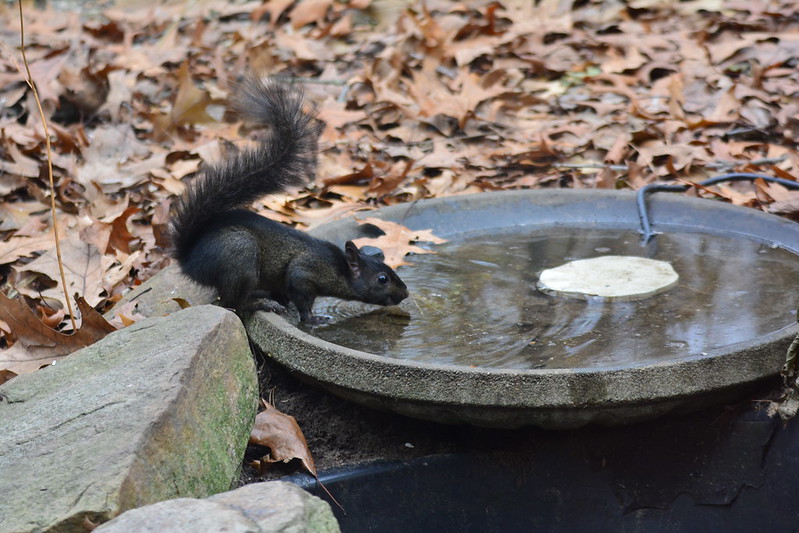


Another Saturday, another trip to Indiana Dunes. First, J. and I detoured to Valparaiso because Rise’n Roll is open until 7 p.m. for the summer (although it’s too bad their customers don’t seem to know that). Afterward we were going to try a somewhat new Mediterranean restaurant, but the wait was longer than I wanted, so we went next door and waited just as long. My spur-of-the-moment decisions are not always logical.
Having watched the Perseid meteor shower, and possibly the International Space Station, at Indiana Dunes National Park West Beach several years ago, I keep wanting to recapture the magic. The NPS doesn’t host the event anymore; it’s at the state park beach these days, minus ranger and guest speaker. It doesn’t seem to be as dark at the beach, though, with Chicago lighting up the night across the way.
After staring at the sky for a while, my eyes play tricks. Stars blink on and off, then disappear entirely. Other lights move erratically, then also disappear. Even without the Perseids (we may have spotted one or two streaks), I saw an entire show.
For breakfast, we went to Round the Clock, the two-restaurant chain (Chesterton, Valparaiso). Contrary to the name’s promise, the restaurant closes at night and opens in the morning. This disappointed me vaguely. I didn’t expect Round the Clock to have hours!
On to the Schoolhouse Shop. I wanted to sip coffee with the birds and butterflies in the back area, but since they also had a ginger iced tea I went with that. The cashier told us there were frogs by the water feature if we wanted to sit there, but I opted for a spot closer to the bird feeders and flowers, where a black swallowtail repeatedly evaded me.
Eventually I wandered back to the water and heard a plop that sounded suspiciously like a frog jumping in. As I walked around the edge I heard a second plop. I still didn’t see anything, but a few seconds later I caught a movement followed by a third plop. Eventually I spotted one frog in the water, convinced no doubt he couldn’t be seen. I left for a few moments and when I came back one was perched on an overturned flower pot and another was half sunning on a wee ledge. Later I saw a third one hanging in the water, one leg askew, pretending to be dead or invisible. He reassured me of his health when I got too close. Someone on iNaturalist helped me identify them as green frogs.

I can’t tell you how much I hate to leave the Schoolhouse Shop, although I always do so poorer.
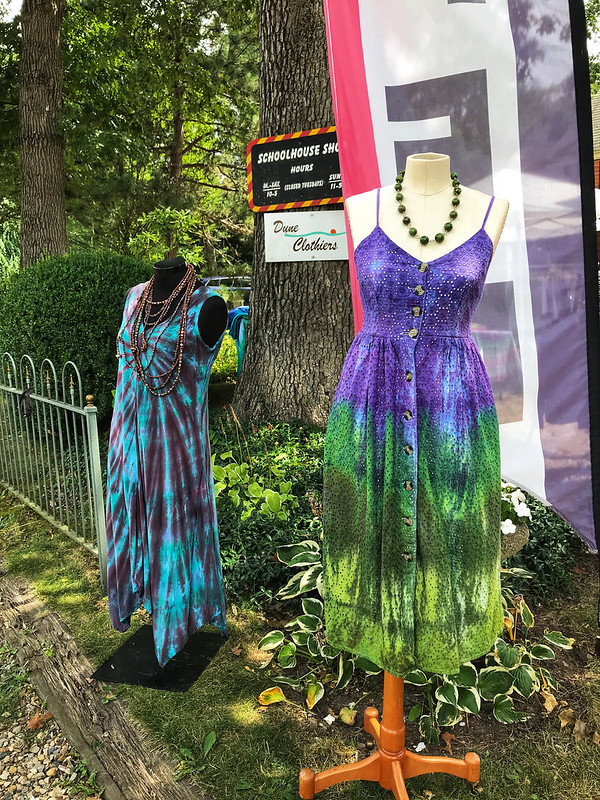

But we had a date with the Emita II, a tour boat moored in Trail Creek by the Old Lighthouse Museum in Michigan City. Last year I’d made arrangements for a tour, but the afternoon excursions were canceled due to choppy waters. I was glad to have a chance to try again. The clouds were gathering but Lake Michigan looked as calm as it ever does.


We arrived early enough to get a table by the rail that would be on the shore/port side going out — perfect. While we waited for everyone to board, I heard a familiar sound approaching. A westbound Amtrak train raced by on the opposite shore of Trail Creek — possibly the Wolverine that leaves Chicago at 1:25 p.m. on its way to Pontiac. It breezed by so fast it was mostly a blur.
Finally 3 p.m. came and we backed out, passing the Nipsco coal-fired generating plant with its cooling tower that dominates Michigan City — I’m told it can be seen from Chicago, although I haven’t yet looked for it. Our host told us the more slender tower marked the location of the Hoosier Slide, once Indiana’s most recognizable landmark. All that’s left of the Hoosier Slide are vintage blue-tinted Ball canning jars.


After leaving the creek for Lake Michigan, we passed Mt. Baldy, a “living” dune that is moving four feet a year, which means at some point it will bury the nearby NPS buildings and parking lot and encroach on U.S. Rte. 12. Mt. Baldy is also famous for mysteriously swallowing a six-year-old boy who was recovered three and a half hours later. The Smithsonian and the Northwest Indiana Times have the story. I tried to climb Mt. Baldy once but had to stop maybe 20 feet short of the crest — stopped by fatigue, steepness, and shifting sands.
Now Mt. Baldy is closed except for ranger-led hikes; the rangers know where the tree holes are. On this day several people were trespassing on the shore side of Baldy. “They’re not supposed to be there,” the boat guide said. I wonder how often that happens. The guide noted that Baldy has an armchair shape vs. a normal sand dune shape due to its ongoing loss of sand. I wonder what its future will be and hope it, unlike the Hoosier Slide, will have one.

After Baldy there’s a series of beaches and dunes, with many visitors as well as boaters just off shore.

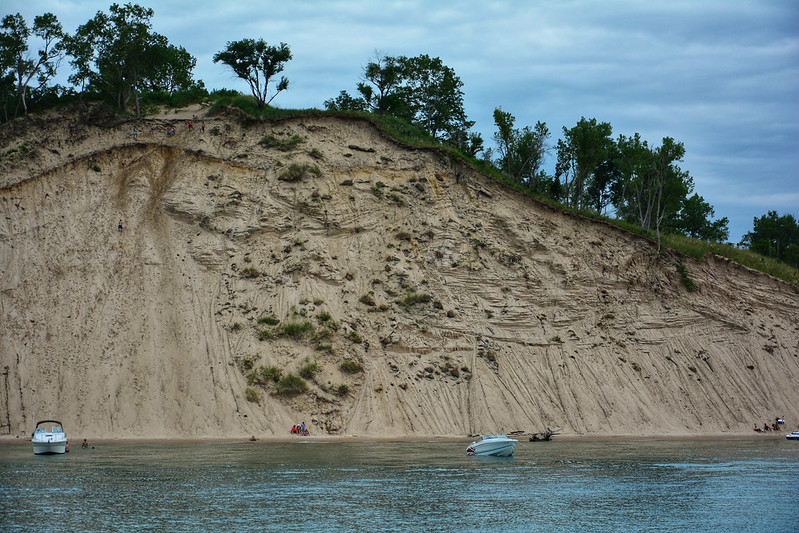
I didn’t know what to expect after the dunes, but there was Beverly Shores — and the 1933 Chicago World’s Fair Century of Progress Homes. The flamingo pink Florida Tropical House is the easiest to see, but you get a glimpse of all of them (the Cypress House is the least visible).
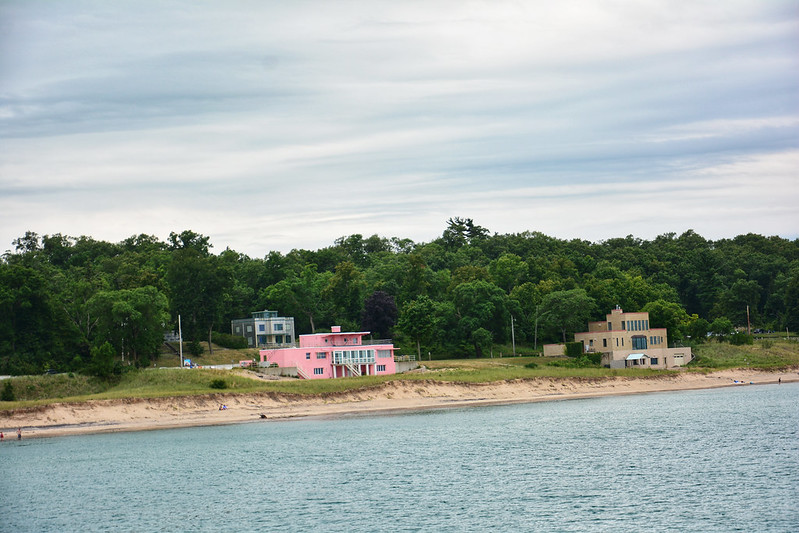
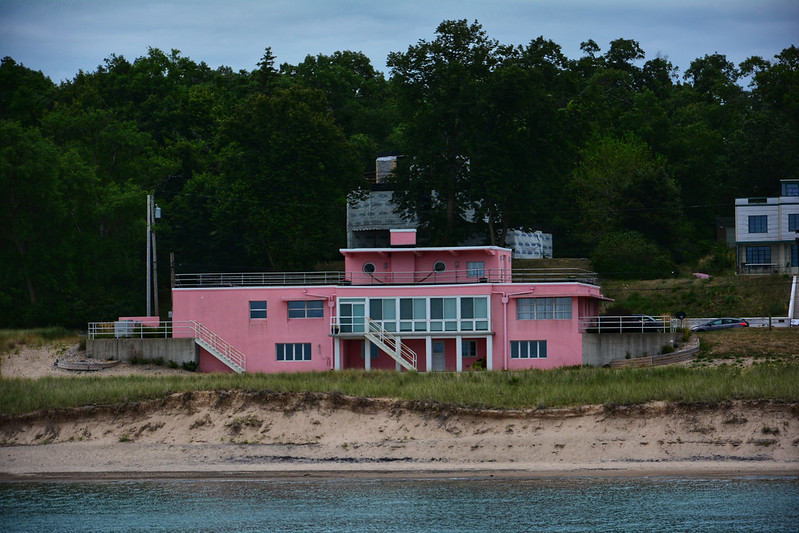
The round trip takes about two hours. On the way back we spotted a boat with a plethora of fishing rods sticking up and men who likely had more beer than fish.
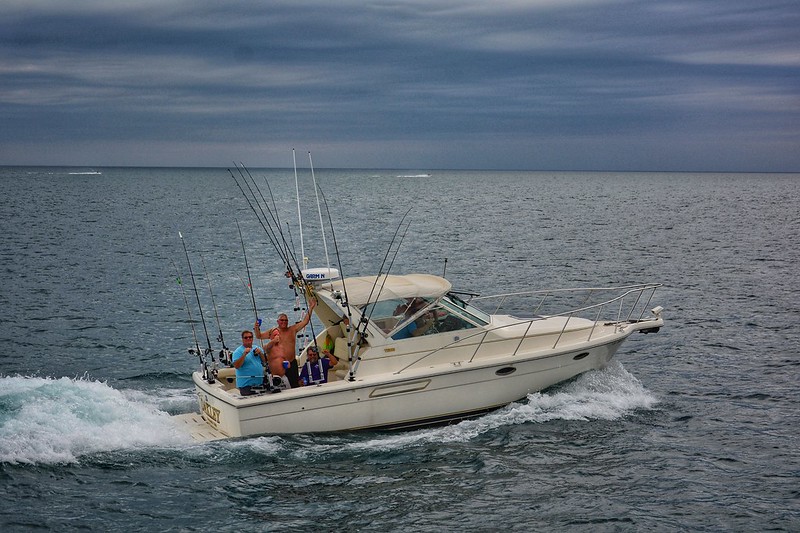
I also took more photos of Indiana’s only lighthouse. The former lighthouse, now the Old Lighthouse Museum, was tended for 43 years by a woman named Harriet Colfax. Having once tried to pick up a bucket of sand representative of a single lighthouse oil bucket, I can tell you toting those buckets up lighthouse stairs even once a day would not have been the job for me. I can just haul myself up, with the help of the railing. Yet lives depended on the lighthouse and its keeper.

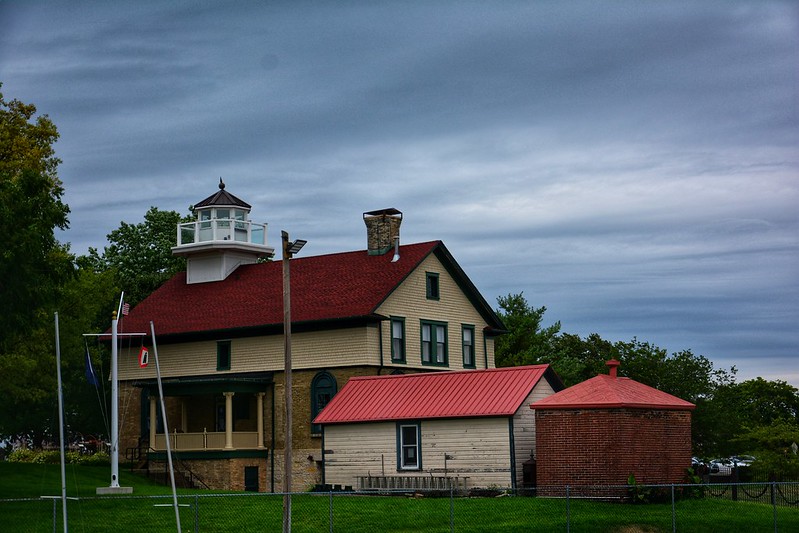

After dinner at Leeds Public House we detoured to the shore road, something I’ve wanted to do for a while. Eventually we started to recognize some of the eastern beaches, then the Century of Progress houses, then Kemil Beach. It didn’t take much longer than the usual route, except for getting onto it — the turn was blocked by a big utility vehicle and crew.
And so ended another Indiana Dunes adventure.

I’ve long wanted to stay at Dunes Walk Inn, so I made a reservation for May 4. This is before the season starts, along with a two-night minimum. I had the Furness suite, which was like having a tidy apartment with a deck and a residential view — a home. Furnleigh Lane, wide enough for one car, adds to a certain country feel, even if nearby Rte. 20 does not. At the end of Furnleigh Lane lies a cemetery across the street from the Schoolhouse Shop. Lovely area for a little Dunes adventure.
With an early enough start, my travel companion J and I made it in time for the first Chesterton European Market of the year. I have no idea how much cash I spent — if only I could lose weight as fast as my wallet does.
After the market (during which I snuck into O’Gara and Wilson), we stopped at Red Cup Café, then set out for Rise ‘n’ Roll in Valparaiso. They had beet pickled eggs, a Schirf family favorite! Yes, please. I don’t know if beet picked eggs are an Amish/Mennonite thing, a German thing, or a Pennsylvania thing (or a combination — clearly they’re not just Pennsylvanian). Those made without the beets aren’t nearly as good.
After I had spent what felt like a couple of paychecks on food and more food, we went to Lucrezia Café for dinner. It’s usually too crowded to consider, but maybe we beat the dinner crush. Afterward, we visited the state park beach briefly — it was colder than I’d hoped.
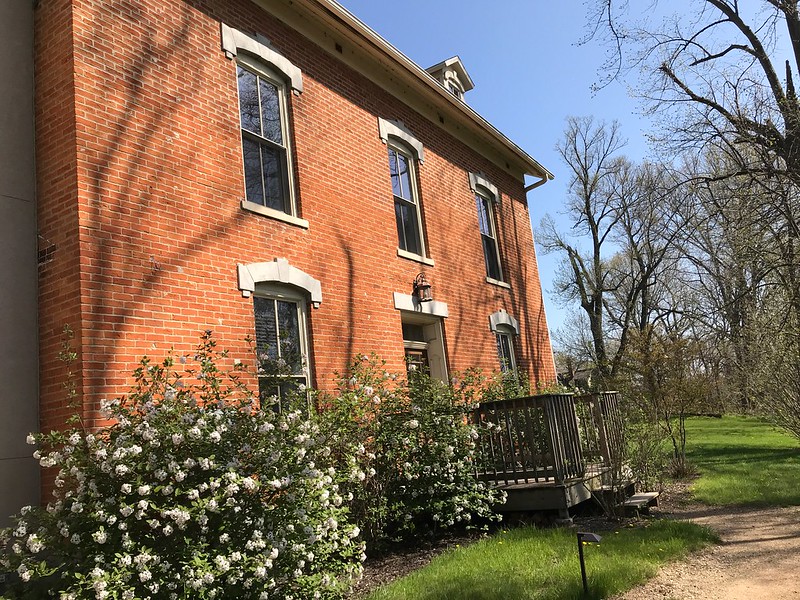
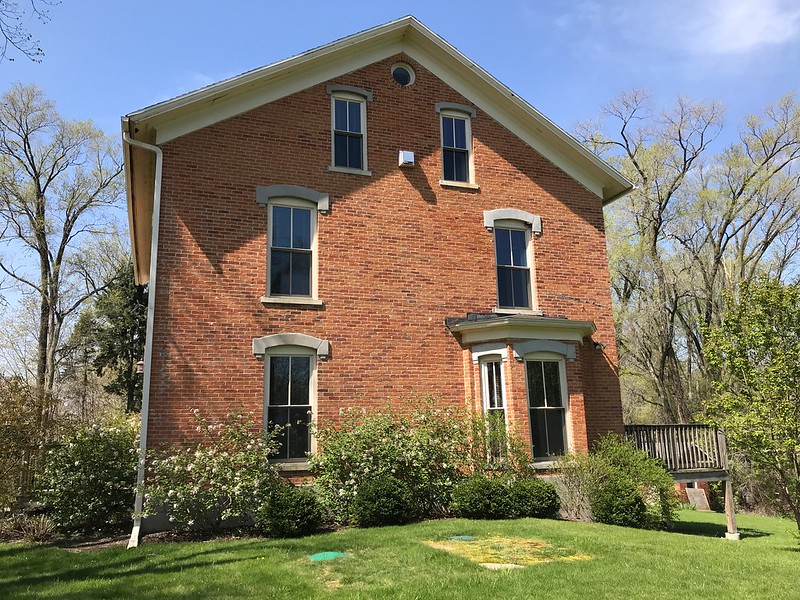

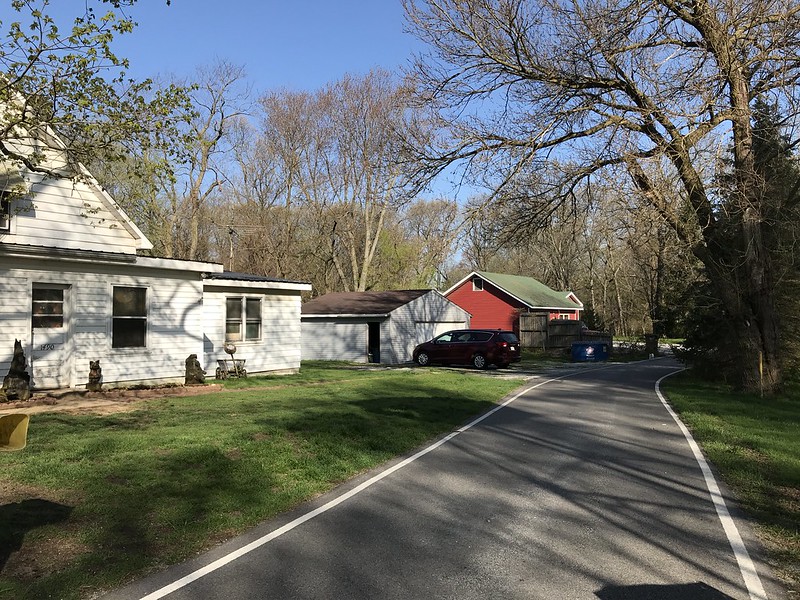
Breakfast was at Third Coast Café, followed by a quick stop at the Little Calumet River boat launch down the road. The flooding that had made the trail impassable for months had receded. The trees had been thinned out, too, to an extent that looks like devastation but is likely better for the wetland.
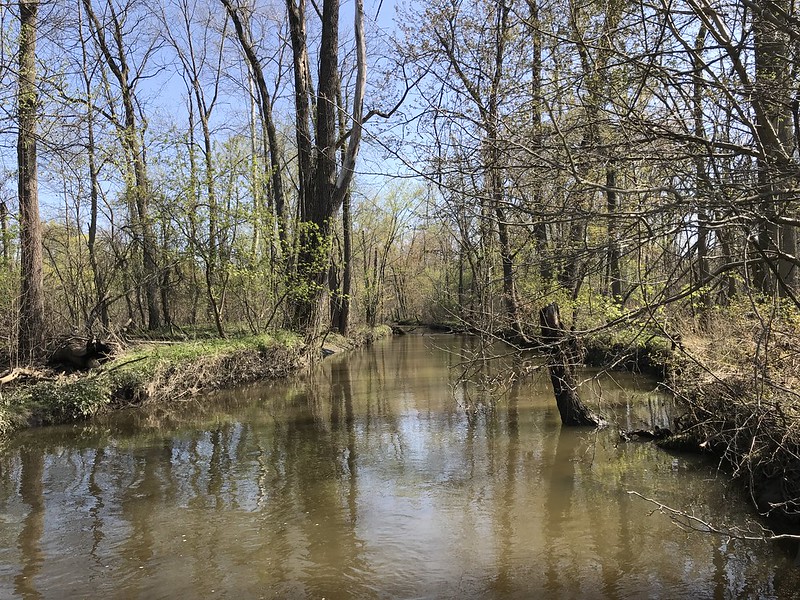
What to do? We went to the Schoolhouse Shop, where I found out the back patio was open. It was warm enough to sit outside, so after I had collected a shopping basket full (and then some), we got coffee and sat outside for close to two hours. Their feeders were attracting a lot of birds, including several species of woodpecker. The owner said they’d seen pileateds flying around, too. A ruby-throated hummingbird or two showed up, but never long enough for a good look. As we were thinking about leaving, a red-breasted grosbeak showed up (it knew my camera was in the car). What a perfect off-the-beaten-track spot.

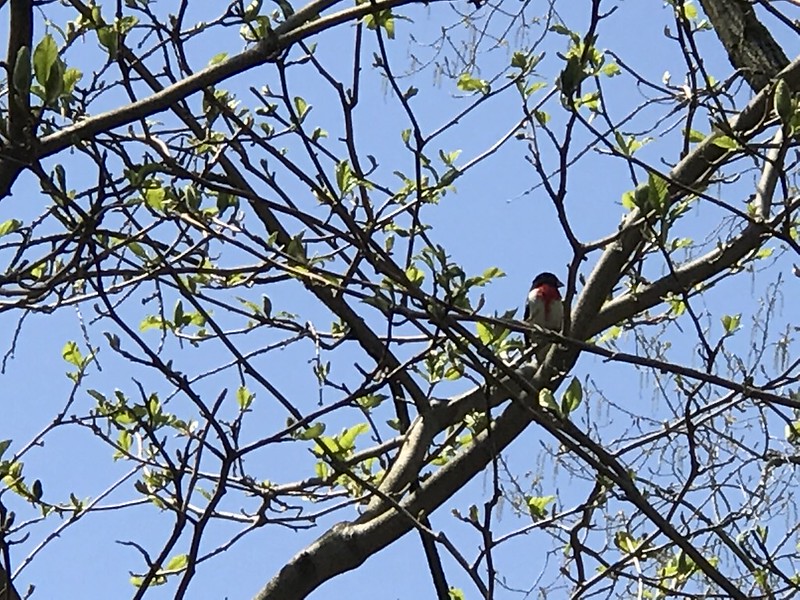

For lunch we headed to Hunter’s Brewing, which has traded in the long community tables for more conventional seating. It felt strange. I like Hunter’s because you can try different beers in small sizes.
I wasn’t feeling up to a hike, so I suggested the state park nature center — another hotbed of bird feeder action.
When I got out of the car, I was surprised and delighted to spot a female pileated woodpecker digging into a tree next to one of the trails. She’d started to attract a crowd from inside the center, and the hikers who noticed her stopped to gawk or gave her a wide berth so as not to scare her off. She continued to work the tree as the visitors took photos and video until someone came along with a dog. She finally flew off into the woods, although even then not far. I could almost hear her laughing like Woody Woodpecker.

In the back room overlooking the feeders, we watched cardinals, goldfinches, red-winged blackbirds, woodpeckers, etc., even a hummingbird (or two?).
Later a determined raccoon ambled up and climbed past the baffle, coming to rest on it (no doubt bending it). It gorged on seeds until one of the nature center staff shooed it away. It didn’t go far, however, and returned within minutes each time. She took a photo to prove the baffle hadn’t done its job.

One man, who was not quite the bird expert he pretended to be, mentioned he wanted to see a rose-breasted grosbeak. He left after a long visit — about three to five minutes before a rose-breasted grosbeak appeared. Typical.
I didn’t get any good shots, but seeing the pileated woodpecker so closely and clearly made my day.
The nature center closed, so we went to the Longshore Tower off the west parking lot overlooking the state park beach. We discovered the tower is accessible, with disabled parking near a sloping paved path compared to the stairs from the west lot. A grandmother had wheeled her grandson up there. After I arrived, they politely demurred to each other about when they should leave. “Do you want to go?” “Do you want to go?” “Do you want to go?” Eventually someone decided to go, and they went.
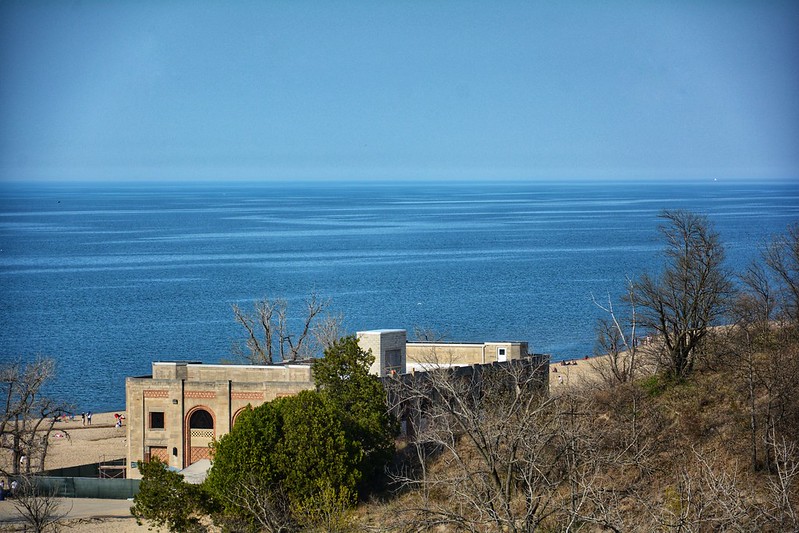
After checking out the view, we walked up a trail to the top of the dune. True to form, J. made it to the top, while I fell short by several feet — at the point where the steepness tested my ability to take one step forward without sliding two or three back.

Finally, we left, but it was early enough I decided to check out the road I’d seen that goes out into Wolf Lake. Once I’d figured out how to look for it in Google Maps, it wasn’t hard to find — if you’re willing to cross railroad tracks, hit many bumpy spots, and splash through water on low spots in the road.

We found we’d been on part of this road before one autumn, but as pedestrians. At a certain point it had been closed, probably for hunting. I recognized the spot at which I’d stopped walking and waited for J., who’d gone ahead for a short distance. Little had we known the road continued most of the way over the lake. Time of year matters.
After driving through the woods we came out near a low spot where the lake sloshed onto the road, parked for a bit, and took in the late afternoon scenery. Canada geese meandered up and down and across the road, goslings in tow. I don’t worry about them becoming an endangered species soon.
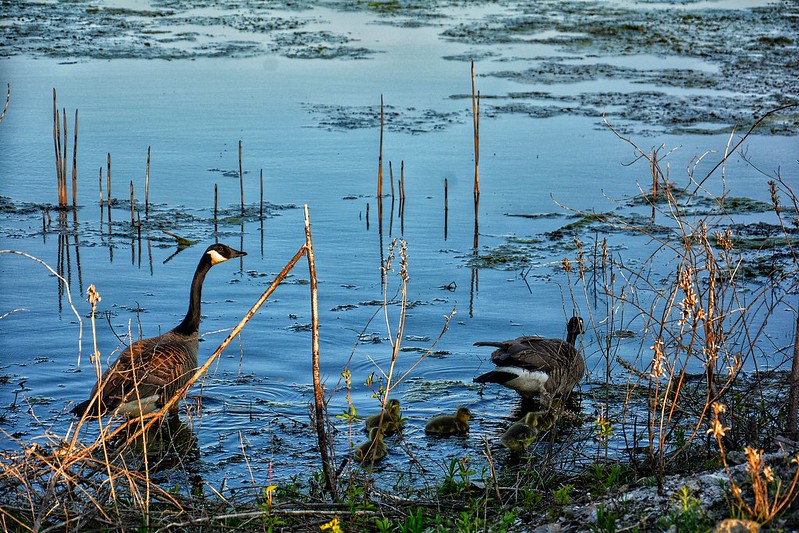

We drove to the end of the road, past a number of anglers. The road is part of the Illinois-Indiana state line. I read that game officials like to patrol it to make sure anglers have a license for the waters into which they’re dipping their lines. If true, that’s hilarious. The fish, of course, are indifferent to such niceties of residency.
Near the end, we found a nature sanctuary on a slight elevation and walked down part of the trail. Later motorcyclists, who’d been revving their engines near the top, rode down it and into the wetlands. I wonder if that’s a “thing.”
By now the sun was setting, and most of the anglers and other visitors were leaving or packing up. The regular entrance/exit was closed so we navigated to an alternative exit on a side street. It would be easy to get lost around there.
And so ended another little adventure on the tranquil note of a lake sunset accompanied by the roar of motorcycle engines.

Letter from Michiana: Our newest national park (David Hoppe):
I suppose most people go to national parks to get away from it all. To leave the world they know behind. This kind of escape is available at our newest national park. But there is something else. Something I think my friend was alluding to. You don’t get away from it all at the Indiana Dunes National Park the way you might at Yosemite or Yellowstone. In fact, you come up against it. This national park, you realize, is actually a last line of resistance, a green and blue membrane holding back the accumulated pressure human will has piled on the earth and insisted was progress.
David Hoppe
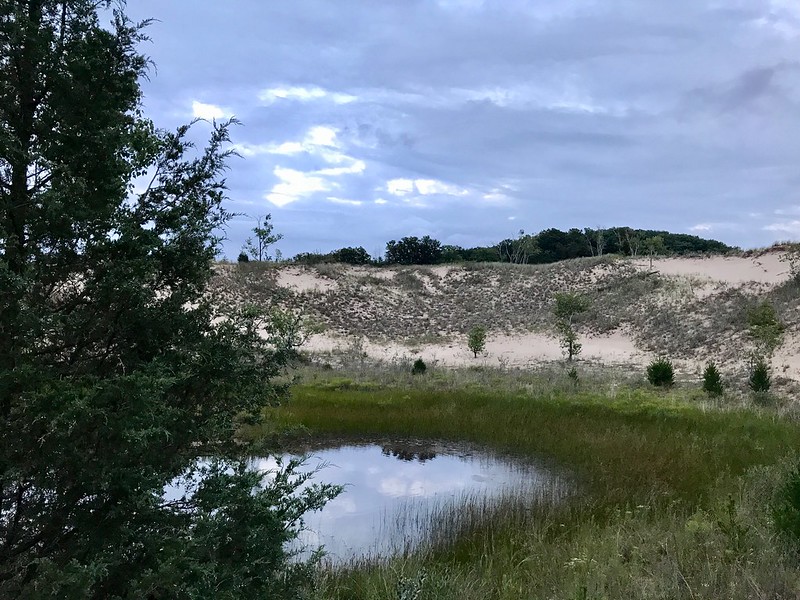

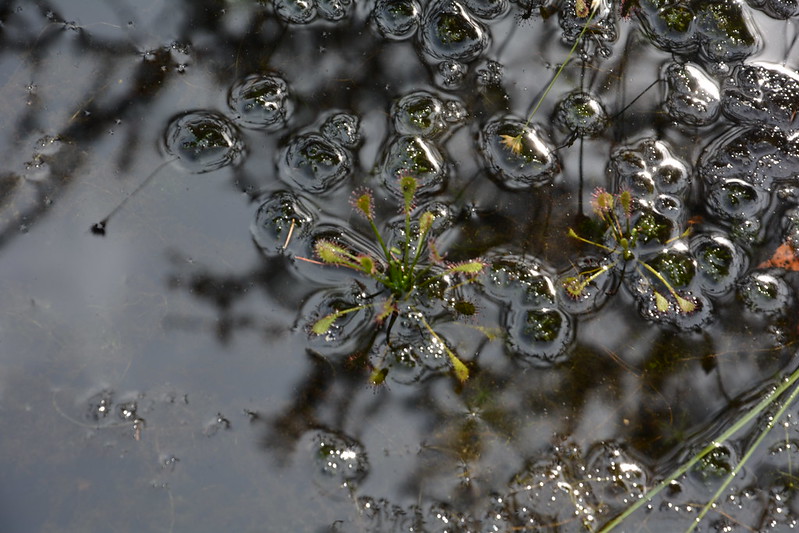
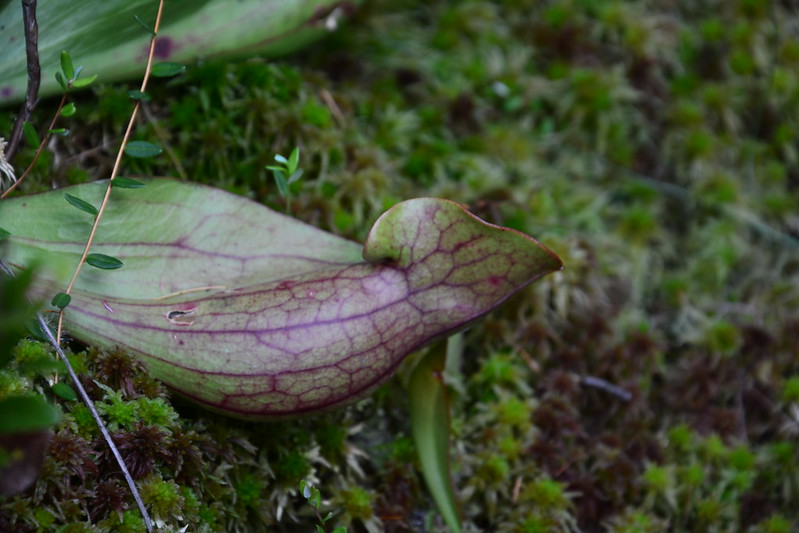


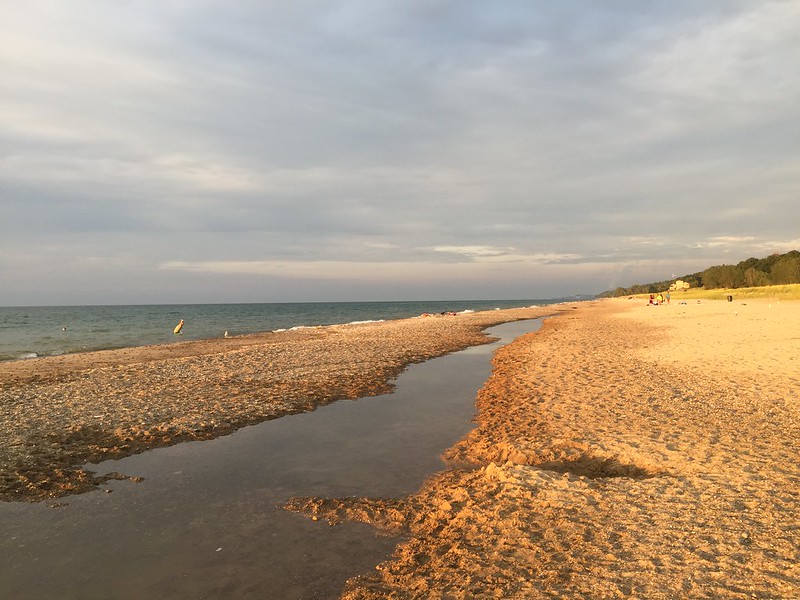

Note the date — 2 March 2019, the first Maple Sugar Time held at the newly designated Indiana Dunes National Park. No doubt it will be years before the signs are replaced.
As I’ve probably said before, Maple Sugar Time brings back one of the few bits of childhood I remember, if vaguely. My class — second grade? — made a field trip to a maple sugar farm (sugar bush) in March, I assume. I wish I knew where, but I’d guess it was owned by the family of a classmate. The world is enormous to a seven-year-old, so I remember it as far away and magical.
The day was dreary and foggy. Dense clouds of fog everywhere at ground level. Or maybe I’m confusing the outdoor world with the sugar shack, where the steam rose in clouds from the boiling sap. I’ll never know for certain. In a world before smartphone cameras we weren’t able to preserve even marvelous moments except in our faulty, failing brains.
I was given a piece of maple sugar candy to try. LOVE. Much better than plain white baking sugar or sugar cubes — some ineffable, ephemeral quality beyond mere sweetness. My mother must have given me some money because I bought a tiny bag of the precious maple leaf-shaped goodness. Even now, when my “allowance” is more substantial and all my own, I look upon maple sugar candy as a rare luxury.
Perhaps the other high point was the draft horses snorting steam into the fog. We may have gone on a wagon ride. If such a thing makes me happy today, imagine how it thrilled me 50 years ago?
Back to present-day Indiana. J and I indulged in our traditional start to Maple Sugar Time — the Chesterton Lions Club pancake-and-sausage breakfast served in a vinyl-sided tent that keeps out some of the cold and breezes. It’s like the year’s first picnic.
Our timing was perfect. We finished our 2 p.m. “breakfast” and found Ranger Bill with a group at the Maple Sugar Trail, ready to go. The hike covers how to identify sugar maples, and I learned the box elder is a maple.
We walked through the various eras of maple sugar making, from hot rocks to metal pots to Chellberg Farm’s sugar shack to more modern methods. As many times as I’ve been to this event, I’d never gone inside the sugar shack. While an impressive amount of steam arose inside (welcome shelter after the cold!), it came from boiling water. Current daytime temperatures are too cold for maple sugar sap to run. Maybe next week — current forecast is for temperatures in the low 40s. But the forecast changes every day.
The walk ended up at the Chellberg farmhouse. Since the building that formerly housed the store has been covered to an employee/volunteer center, the maple goods were for sale in the entry room. Yes, I did buy maple syrup, maple cream, and of course the luxury of my childhood, leaf-shaped maple sugar candy. In another room, we picked up a Dare maple cream cookie. They’re not just for the kids.
Outside we found Belgian draft geldings Dusty (2,450 pounds) and Mitch (2,350 pounds). Dusty left horse slobber all over my hand and bag. When a girl and her brother stood by him for a photo, he started to groom her hair. A little disgusted, she shoved her brother into her former spot. “That won’t help,” the volunteer said. “He’ll just reach right around him.” On cue, Dusty did just that. He wasn’t licking only people. Between visitors, he gave Mitch’s neck some good grooming strokes.
We said goodby to Dusty and Mitch and chickens and headed to Indiana Dunes State Park so I could get a yearly pass and because the beach is gorgeous (and less crowded) on a cold March afternoon. We walked around, but not on the shelf ice. It seems someone finds out the hard way every year that the sign isn’t there for decoration.
We tried the Speakeasy at Spring House Inn, but at this time they don’t serve meals so off we went to Chesterton’s Villa Nova to warm up on Italian cuisine (and add back any calories we may have burned off).
As a follower of Indiana Dunes National Lakeshore on Facebook, I saw mention of Maple Sugar Time event on their timeline, along with a series of maple sugar-related questions leading up to it to generate interest. I persuaded J. to go on Sunday, March 8. Often such events are geared to children and families, but I enjoy them and usually learn a little something — for example, I didn’t know this is the only National Park System location that makes maple syrup. (I didn’t know any National Park System location makes maple syrup.)
I love maple syrup and maple sugar candy, which goes back to the early days of my existence — perhaps second grade. One of my few strong memories from that time is of a visit to a western New York farm that produced maple sugar. I don’t know how the idea for this particular field trip came about — perhaps the family had a child in my class or school — but at the time I didn’t get out much, so I was eager for the change-up to the routine and the adventure.
I seem to recall a magical, misty, dark day — the kind that seems to be twilight from sunrise to sunset. The taps in the trees, the steam rising in clouds from the vats, and at the end getting a teeny bag of maple sugar candy to take home. The strong, sweet taste of that candy hooked me for life.
The farm had draft horses, and we may have gone for a wagon ride. I’m not sure about that, or about my memory of the horses steaming in the chilly air, but that at that moment my lifelong love for horses began.
All of this was going through my mind on the way to Indiana Dunes. My directions were bad, so we ended up at Indiana Dunes State Park, where we were surprised to see the stream and beach transformed. There was little water in what was left of the stream, and we couldn’t see the lake or the Chicago skyline over the piles of snow-topped sand along the edge of the beach, almost like a breakwater. Signs warned visitors not to walk on the shelf ice, although some people ventured onto the stream’s ice to climb the piles. The sand was firmer than it is the rest of the year, making it much easier than usual to cross the beach.
At last we found our way to the Chellberg Farm, where Maple Sugar Time was being held. Friendly souls invited us into a tent for a 3 p.m. breakfast of pancakes, sausage, coffee, and, of course, maple syrup, all for $6. As if that weren’t enough of a bargain, they decided to close shop as we were eating, so they gave us leftover sausages.
Our next stop was the gift ship, where you can bet I bought maple syrup, maple sugar candy, and maple cream, all from Harris Sugar Bush in Indiana. It’s very bad for me, I know, but I get a taste of maple sugar when I can, which is rare. It brings back those memories.
As we walked from station to station, we picked up interesting facts and details about the maple sugaring process and industry — for example, Vermont produces 40 percent of our nation’s maple syrup, while New York is next with 18 percent. Pennsylvania (4 percent) is further down the list, but Illinois and Indiana don’t make the cut. A volunteer who was cooking sap in a pot over an open fire showed us that you can tell when the it’s done by dipping a metal ring into it — like soap in a bubble ring, the cooked syrup forms a film across the ring.
I heard a woman talking about cooking sap in her house, but the volunteer recommended cooking outdoors only although I didn’t hear why. Farther along, I saw why, and remembered my second-grade adventure. Steam rose thickly from vats, thickly enough to peel wallpaper. A steamed-over glass bottle was suspended over the vats so it would be warm enough to pour hot syrup into without cracking. The volunteer at this station also pointed out that the syrup is strained, but Indians used it unfiltered, which kept the nutrients intact.
On the way to the farmhouse we ran across a man who said we’d be rewarded there with a cookie — even if we didn’t have a child. (In keeping with the theme, they proved to be Dare maple creams.) First, though, there was a taste test between maple syrup and Mrs. Butterworth syrup. I declined, J. chose correctly, and a few of the other people clearly have faulty taste buds because they were wrong. The volunteer noted that real maple syrup is thinner than the fake stuff.
We detoured again to the state park and walked around the southwest end of the building, where the sky was starting to get pink behind the smokestacks. After looking at a map the other day, I realized what a narrow strip of heaven Indiana Dunes National Lakeshore is — not unlike Letchworth State Park in New York and Starved Rock State Park in Illinois, both of which run along rivers.
In Chesterton, Octave Grill was closed, so we tried out Popolano’s, where we ended a great day on a delicious note — minus maple syrup.